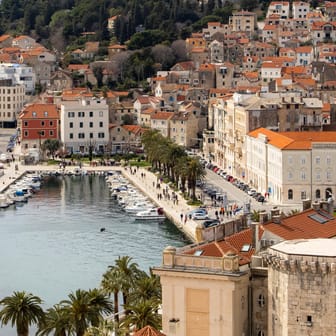Tvrđava Minčeta





Ask ThatchGPT
Suggest a local expert to plan my trip
Suggest an unique itinerary for my Dubrovnik trip
What foods do Dubrovnik locals eat
What are some true hidden gems in Dubrovnik
Help me brainstorm trip ideas for Dubrovnik
Help me plan a family-friendly trip to Dubrovnik
What people say

Pedro Pereira
Available for hire
"The Minceta Tower, built in the early 1460s, stands as a formidable round fort that dominates the northwestern section of Dubrovnik, serving as a critical part of the city's fortifications during a time of significant Turkish threat. This iconic structure has become synonymous with Dubrovnik, often hailed as a symbol of the "unconquerable city." Its recognition extends beyond history; fans of *Game of Thrones* may recall the Minceta Tower as the House of the Undying in Qarth, where Daenerys Targaryen sought her stolen dragons.
Originally constructed in 1319 as a four-sided fort by the Menčetić family, the tower underwent significant modifications following the fall of Constantinople to the Ottoman Empire in 1453. Italian sculptor and architect Michelozzo di Bartolomeo Michelozzi was commissioned to redesign the tower into a round structure optimized for warfare, featuring impressive six-meter-thick walls and protected gun ports. However, a disagreement with local officials led to his departure back to Italy before the tower's completion. It was then finalized by Giorgio da Sebenico, also known as Juraj Dalmatinac, who reinforced the tower's base and added its distinctive Gothic crown.
Completed in 1464, the Minceta Tower remains a must-visit site for tourists. Though the ascent of 750 steep, winding steps can be a challenge, those who reach the top are rewarded with breathtaking views of the old town of Dubrovnik on one side and the vast expanse of the Adriatic Sea on the other. The tower also features a museum in its excavated basement, offering insights into its historical significance.
During the summer months, the Minceta Tower displays the Libertas flag alongside its own, a powerful symbol of the old Dubrovnik Republic. The term "libertas" is Latin for freedom, reflecting the spirit of independence that characterized Dubrovnik's rich history."
Read more in:
Mentioned in these guides
About Tvrđava Minčeta
Get the inside scoop on Tvrđava Minčeta from local experts, travel creators, and tastemakers. Browse genuine trip notes, Tvrđava Minčeta reviews, photos, travel guides, and itineraries from real travelers and plan your trip with confidence.
Phone

Save this spot for later or start mapping out a new trip today
Try our AI Travel Assistant and get instant answers to any questions about your trip.
Ask ThatchGPT




